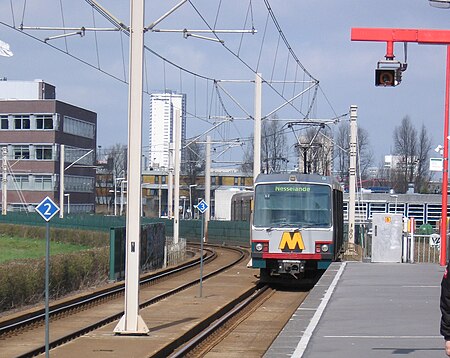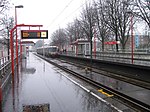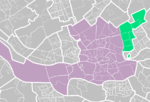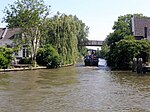Schenkel metro station
1983 establishments in the NetherlandsEuropean rapid transit stubsNetherlands transport stubsRailway stations opened in 1983Rotterdam Metro ... and 1 more
South Holland geography stubs

Schenkel is a subway station on Rotterdam Metro lines A and B, and is situated in the northeastern part of Rotterdam, in the borough Prins Alexander. The station is named after a neighbourhood in nearby Capelle aan den IJssel, situated to the southeast of the subway station. This station was opened on 28 May 1983 when the East-West Line (also formerly the Caland line) was extended from its previous terminus Capelsebrug. Note that this section uses overhead wires to provide traction power. At Schenkel station, passengers can transfer to RET-busline 37.
Excerpt from the Wikipedia article Schenkel metro station (License: CC BY-SA 3.0, Authors, Images).Schenkel metro station
Kralingseweg, Rotterdam Prins Alexander
Geographical coordinates (GPS) Address Nearby Places Show on map
Geographical coordinates (GPS)
| Latitude | Longitude |
|---|---|
| N 51.931944444444 ° | E 4.5636111111111 ° |
Address
Kralingseweg
Kralingseweg
3065 RH Rotterdam, Prins Alexander
South Holland, Netherlands
Open on Google Maps









